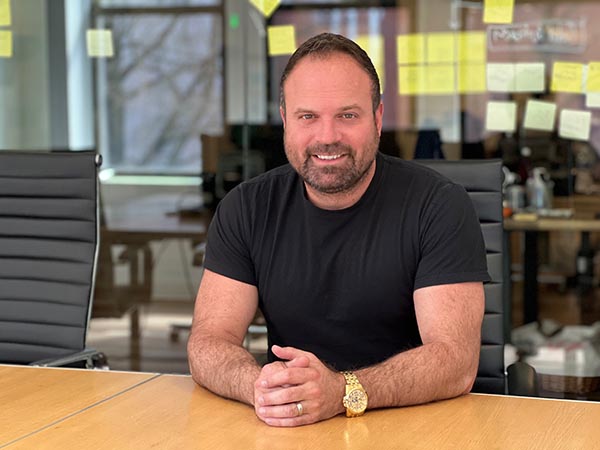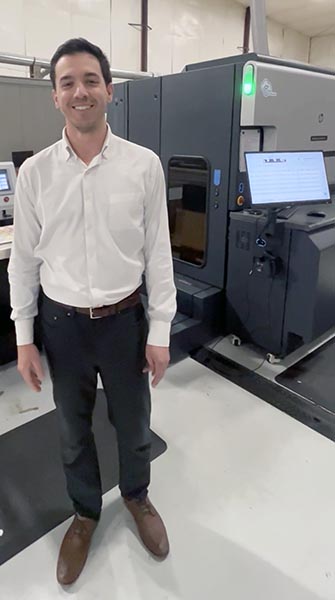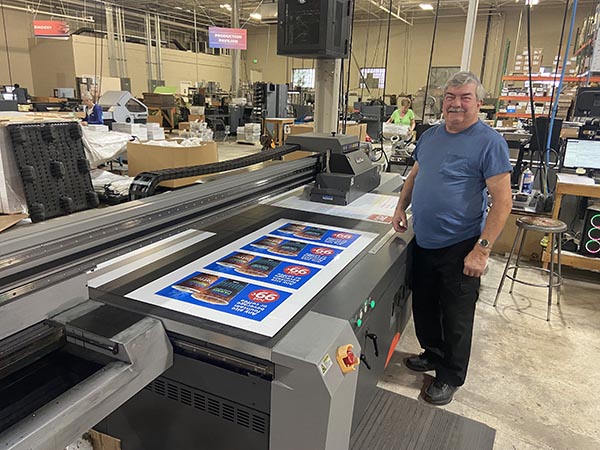As you look ahead to 2024, what areas of your business processes or production workflow do you need to tackle? Need to upgrade your MIS to be more efficient? Accommodate new areas of business? Looking to add AI to your marketing automation? Where do you start?
The reality is, most business owners or managers probably aren’t in a position to do this on their own. They need a team and they need a process. In many cases, they need outside help.
“The focus of most CEOs, presidents, and business owners is operations and sales,” observes Bill Prettyman, CEO of Atlanta-based Wise, one of the largest manufacturers of operational print to the trade. “Having a process keeps them focused and ensures that they are taking into consideration the full range of information. It also ensures that they get the right product that matches their actual business needs.”

Nelson Anderson, founder of Full Sail Media
Wise knows the complexities of large software investments first-hand. It operates five plants—Alpharetta, Ga.; Portland, Me.; and Ft. Wayne, Ind. producing business forms; Butler, Pa. producing programmatic digital print; and Anderson, N.C. purchased in 2017 to produce prime and industrial labels.
When the Anderson plant was purchased, it was running its business operations on Microsoft Office and QuickBooks. With Wise’s plans to significantly scale the operation, it needed a proper MIS. But which one?
Following the Process
Prettyman, a proponent of lean business planning, follows a regular process when making any strategic investment:
- Clearly define the business goal you are trying to achieve.
- Form a team of decision-makers from all of the areas of the company impacted by the decision.
- Define the requirements, in detail, based on the stated business needs. (So you don’t run down rabbit trails.)
- Send out requirements and receive responses from vendors.
- Narrow the list and ask for demonstrations.
- Talk to other users of the software or equipment to see how it is actually performing in the field.
- Get final recommendations or consensus from the team before the purchase decision is made.
In this case, the business goal was clear—transition to a modern MIS that could handle the volume and produce the efficiencies that the plant would need.
The next step was to form a team. For this purchase, the team included Bill Prettyman, Will Prettyman, GM of the labels plant, the company’s IT director at the time, and the operations manager whose CSMs would be using the system. Each team member brought a unique perspective based on their area of expertise.

Will Prettyman, GM of labels plant
In addition documenting broad company requirements, team meetings identified parameters that were specific to Wise’s business requirements and the needs of those who would be using the system.
“One of those things was that it’s better to go with something proven—we didn’t want to be the first adopter out in the field,” Will Prettyman recalls. “Second was reporting capabilities. We wanted something that would provide detailed reporting that would allow us to make strategic business decisions. Finally, we wanted something that our developers could work with. We didn’t want anything proprietary.”
This drew the team to the Belgian-based CERM, which had a Microsoft Sequel back end and strong reporting capabilities.
“For us, the back end was as important as—or more important than—the user interface,” Prettyman continues. “The user interface might not have looked that pretty, but we wanted the solution to have a back end strong enough and flexible enough to be adjusted to our needs over time. For that to happen, we needed it to use a back end language that our team can work on.”
This narrowed the list down significantly. At that point, Prettyman says, they looked for references from other users, and the CERM system was installed in 2019.
“We Didn’t Know What We Didn’t Know”
Full Sail Media, a full marketing services company in Baltimore, Md., also recently made a significant software purchase. Started by Nelson Anderson, who took a simple Minuteman Press franchise and grew it to the largest in the country, Full Sail had been growing so rapidly that its growth had outstripped the capabilities of its existing system.
“We were doing 2,000–3,000 jobs per month,” recalls Anderson, founder of Full Sail Media, which offers a full complement of digital and offset print production, a full digital production studio, digital marketing, large format, mailing, promotional items and apparel printing. “When we got super busy, we couldn't track down jobs in the shop. We also didn’t know how much money we were making on each job. We knew we needed to do something, but we didn’t know what.”

Production floor at Full Sail Media
The company hired a consultant to conduct a full assessment. This included three days of comprehensive interviews of everything from the minute details of the workflow to how the company produced an estimate. “We even created a BHR [budgeted hourly rate] for every position in the building—machine rate, person rate, overhead, capacity, excess capacity and multiple shifts,” says Anderson. “It was quite the exercise, but it really opened our eyes to a lot of things we had been missing.”
Ultimately, the consultant’s assessment was that Full Sail needed a more robust MIS. He helped define those goals, which required asking the questions, “What do we need now?” And also, “What will we need in the future?” “Based on those questions, we determined that we needed a system that was web-based, that had an open API and that was developer-friendly to give us the flexibility to tweak the system and do any future integrations that we deemed necessary,” says Anderson.
Taking that extra time upfront benefited Full Sail in other ways, too. Among them, the company discovered a functionality of the system they didn’t know they needed: the ability to let customers give their employees a “swag budget” and access to a company store to order their own branded promotional items.
“I had no idea it was a thing, but it’s a thing,” says Anderson. “The client gives their employees a budget and they can order whatever they want. If they want to order more, it’s on them, but they have credit on the company store. We have customers who have 200 employees. If we hadn’t asked questions about what is hot and how other people are using their web portals, we could have missed a huge business opportunity.”
Form a Team
The next step in making an informed decision was to form a team. In this case, the team included Anderson, the consultant, and his operations manager, all of whom had different needs and would be touched in different ways by the system. After making their needs list, the team worked together to narrow down the options to three. Then they started eliminated more options based on usability, flexibility and overall interface.
Ultimately, the team chose PrintIQ and, subsequently, Infigo as an integrated storefront.
Although Anderson is happy with the company’s selection, he acknowledges that if he could do it all over again, there is one thing he would have done differently: do a more thorough job interviewing previous customers. “Although it wouldn’t have changed our decision, I would have learned upfront that we needed to integrate multiple other pieces of software order to get the full functionality we needed,” he says. “Having that information would have helped me better manage expectations and create a better, more realistic implementation plan.”
Looking back, he says, there was so much “they didn’t know they didn’t know.” That’s why, even though the consultant pushed them far beyond what they would have done on their own, having that “sherpa” to come alongside them was a critical part of their success.
Supporting the Implementation
Part of being strategic about purchasing any type of software is implementation. “Often, it’s not the vision that is the hardest part,” says Bill Prettyman of Wise. “It’s executing that is the hardest part.”
This, Prettyman says, means setting realistic expectations about how long it will take the resources it will take and providing the proper support. For example, it’s a good rule of thumb that, with any piece of software, it will take twice as long and cost twice as much as you expect.
Anderson is in full agreement. “Our consultant at the time told me to put someone on it, full-time—hire someone if necessary. I laughed and said, ‘You’re crazy!’ Now, five years later, I know better— I should have listened.” Sure enough, the implementation took longer and cost more than expected. But Full Sail did learn from the experience. It now has a full-time developer on staff.
Other lessons from strategic software implementations?
- Develop a phased implementation plan.
- Set up employee training and change management in advance.
- Have an internal champion that will drive the process.
There is truly a difference between software investment and strategic software investment. Every company is unique and has individual preferences and needs that need to be taken into consideration. With so many variables, having a set process to help walk through and narrow the options in a strategic way can make the difference between purchasing a software that looks good in the box and one that is both ideally suited to your company’s business goals now and one that supports them in the future, as well.















Discussion
Only verified members can comment.